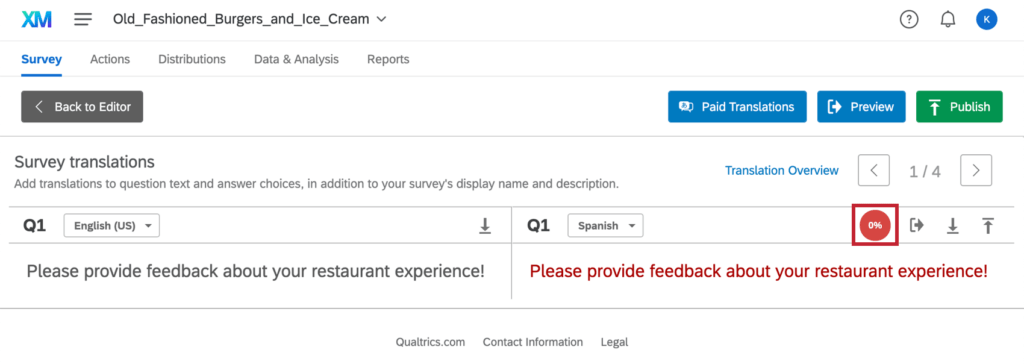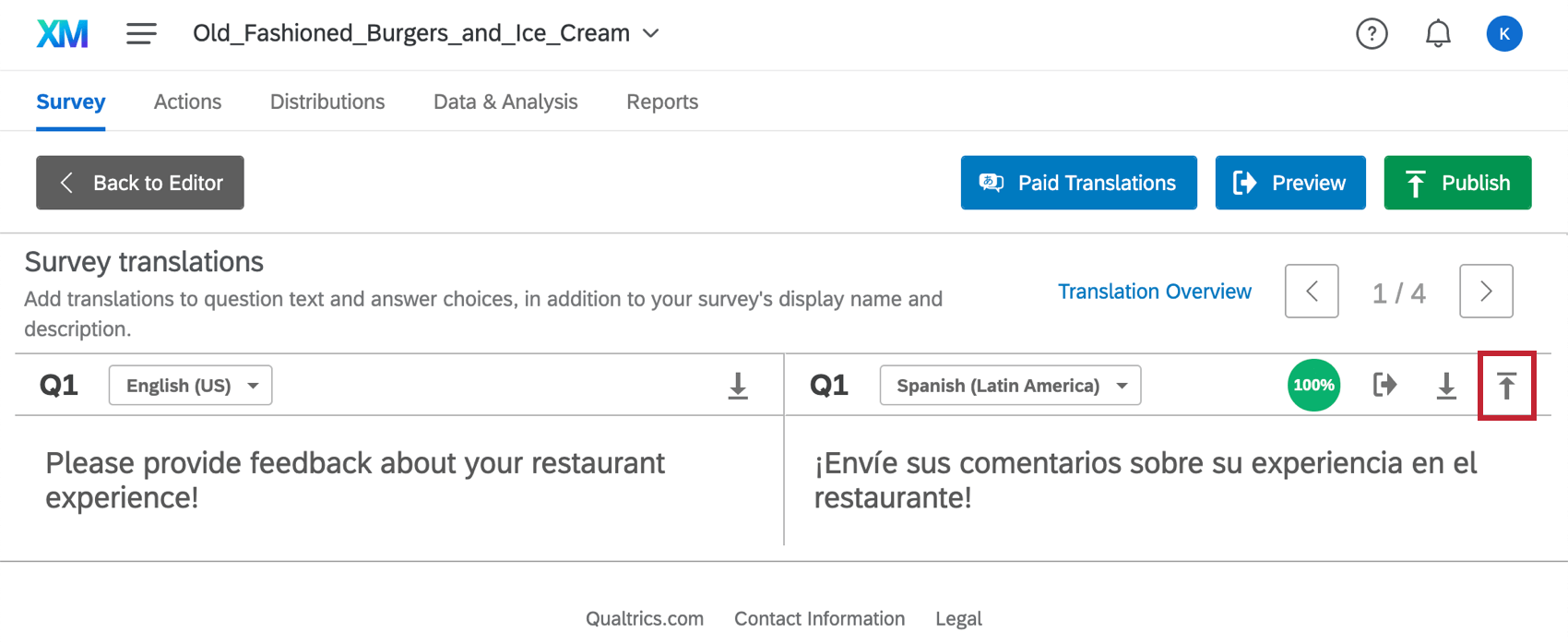Qualtrics has done an excellent job of including translation workflow and formats in its process. In this article, we will discuss how to efficiently manage the translation of the surveys you write and the responses you collect and learn why Qualtrics is one of the top CX platforms.
What is Qualtrics?
Let’s start with a brief introduction to Qualtrics. Qualtrics is one of the industry leaders in customer experience management, which is just a fancy way of saying that they are incredibly good at helping you collect and analyze your customer’s thoughts about your products or services. They provide a powerful online survey tool that allows customers to build, distribute, and analyze survey responses from one convenient online location.
As companies expand into global markets, they need to collect the same information regardless of the customer’s language, and we’ll walk through how Qualtrics makes this easy.
What are my options for translating Qualtrics surveys?
Qualtrics features a few different ways to get translations into a survey. These options include:
- Manual translation through a built-in editor
- Machine translation
- Translation through file export/import
Next, we’ll learn how each option works.
Option 1: Manual Translation
- Navigate to the Survey tab and click Survey options.
- Select Translations.
- Click Add Language.
- Designate all the languages you would like to include in your survey and select each checkbox for the languages you want to have in your survey. Click Close.
- If you need to add a custom language or a language of limited diffusion, scroll to the bottom of the Other Language menu and click Create Other Language. Enter a Display Name, Language Code, and Base Language. Click Create to finish and save the language.
- If you use a custom language, please note that any of the default messages Qualtrics typically uses will appear untranslated.
- Click on the source text you would like to translate (untranslated text is in red) and enter the translation.
- Then click the Preview Question icon to preview how the question will appear to the target audience.
- And finally, click the arrow ( > ) to move to the next question in your survey.
- Repeat steps 6–8 for every question in your survey, and please don’t forget to translate the title and meta description.
- Click the language dropdown and repeat the entire process to add the translations for another language.
- Then click Back to Editor to return to the survey editor.
Remember to click publish if you’re ready to push changes live to survey respondents.
Option 2: Machine Translation
Qualtrics directly integrates with Google Translate to use the abovementioned process and incorporate a machine translation for every sentence. You can access the option by clicking through each sentence and clicking on the percentage icon.

Qualtrics warns users about using this process for two reasons. If you agree to use Google Translate, the content becomes part of the Google Translate database on their servers and is potentially exposed to the general public.
We agree with Qualtrics and suggest being very careful to rely on machine translation with no human oversight. Machine translation can cause severe embarrassment with Customer-facing content. If you choose the machine translation option, please have the content reviewed by a qualified translator.
Option 3: Translation Through File Export/Import (Recommended Approach)
This option will give you the most command and control over your translation. It will allow whoever you work with to translate in a more familiar environment with translation memory tools, spell checkers, and glossaries. If you are working with a translation service provider, they will likely choose the XML format.
Export a file for translation
- Navigate to the Survey tab and choose Survey options.
- In the survey options, lower-left, “Translations” is the last thing listed.
- Select Translations.
- Click the Download Translation button to the right of the translated question section.
- Select a format for the file, choose which languages to export, and click Download.
- If you choose the Excel format, Qualtrics recommends choosing Unicode CSV. The Unicode formatting will preserve non-ASCII extended character sets like accented characters and Japanese text.
- You can now open the file in your preferred editor. At this point, your translation service provider will use their standard workflow to handle the file’s translation.
Import the translated file
- Click the Upload Translation button to the right of the translated question section.

- Select the file you would like to import.
- The import screen will show that you are importing for the language currently being viewed. At this point, you can upload a file with all or any of your chosen languages. There is no need to import one language at a time.
- Click Import once you’ve verified the preview of the imported text is correct and ready to publish.
One important point to note in using this process is that you can meet with your language service provider to determine the appropriate level of service for your project.
This option gives you the greatest flexibility, allowing you to use a human translation workflow or a workflow with machine translation and a human editor to complete the work.
Final Thoughts
Qualtrics has done an excellent job in providing its customers with multiple options for the translation of survey content.




